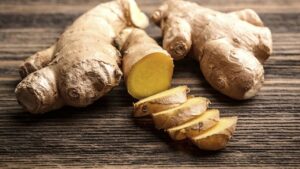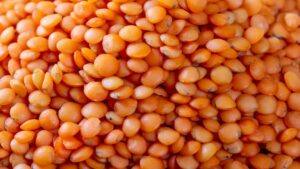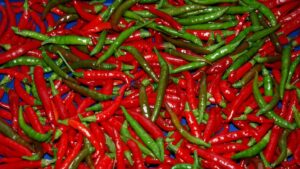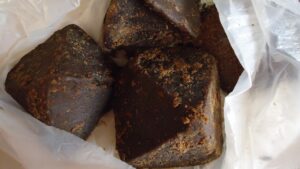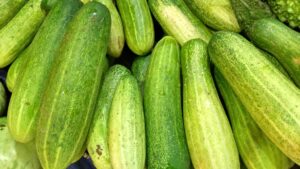Puffed rice is famously called mudhi or muri in Bengal and Odisha. It has other regional nicknames, such as, mumra or murmura in Gujrat and parmal in Madhya Pradesh.
In Sanskrit, it is called Laja. It is also known as arsi porri or porri. Puffed rice, obtained from rice, is a cereal.
Puffed rice is a very simple food item. It is a very versatile ingredient. It is a healthier alternative to fast foods and easily available in the market.
Puffed rice is used in many interesting ways to make quick snacks such as jhalmuri and velpuri as well as desert delights like murir moya.
Puffed rice is also used for religious purposes. It is used in several social and religious ceremonies in West Bengal. It is offered to Agni Dev (God of Fire) as a part of Hindu marriage rituals.
In both Tamil Nadu and Kerala, puffed rice is used in all pujas and prayers to offer to God and Goddesses.
Pilgrims take puffed rice and jaggery with them while visiting the famous Sabrimala Temple in Kerala.

Uses of Puffed Rice in Bengali & Indian Cuisines
Muri is a part of plenty of delicious snacks. It is consumable on its own. The sight of little children eating muri, when they are just learning how to eat, is very common in many Indian households. Muri is easy on the stomach and quick to digest.
Muri is the ‘QUEEN’ ingredient in jhal muri, which is a favourite snack for Bengalis. Kolkata and Jhalmuri are inseparable from each other.
When it comes to street foods, this iconic tangy-spicy snack has given the City of Joy a new identity.
The lip-smacking dish is prepared with muri, potatoes, peanuts, tomatoes, tamarind pulp and chopped green chillies.
Bhelpuri is another popular street food made with muri. This is a lot like jhalmuri in terms of style of making and presentation and considered an iconic street food in many parts of India.
Both jhal muri and bhel puri have their own distinguished flavours. The style of serving jhal muri and bhelpuri is also unique and appealing.
A cone-like structure is made of paper bags and filled to the brim with consumable stuff.
In Karnataka and Andhra Pradesh, puffed rice is consumed with fried fritters.
This practice is also popular in Bengal as well, where people love to relish the crunchiness of muri with potato fries or mixed vegetable fries along with a cup of steaming tea in the evening.
In the district of Bankura, West Bengal, puffed rice is eaten during breakfast. Muri along with any plain or mildly spicy veg curry is a very healthy and comforting combo for breakfast.
In the northern districts of Odisha, puffed rice is a favourite item for breakfast. Mudhi mansa is a popular chicken dish in Odisha, which is prepared with puffed rice.
In Madhya Pradesh, puffed rice, bhel and sev make a wonderful snack. Puffed rice is called muri or murhi in the Mithila region where it is eaten with onions, fried potatoes or even with fish and mutton.
In rural Bengal, murir moya, a kind of dessert made from a mix of puffed rice and jaggery, is very popular.
In many rural and urban houses, murir moa is offered to Goddess Lakshmi. This moya is also popular in Telangana.
Questions & Answers:
How Does Puffed Rice Taste?
Puffed rice tastes crunchy and bland.
What is Puffed Rice Good for?
Puffed rice is good as a snack like Chaat, Bhelpuri, Jhal Muri and even people have it as food with milk, dal and curries.
How Do You Cook Puffed Rice?
Puffed rice is cooked in the hot sand where the rice pops up to form puffed rice.
Can Puffed Rice Be Made at Home?
Yes, you can make Puffed rice at home.
How Do You Crisp Up Puffed Rice?
If you heat up the puffed rice a little then it can be crispier again.
Can You Pop Rice Like Popcorn?
Yes, if you cook the rice in hot sand then it will pop up like popcorn.


